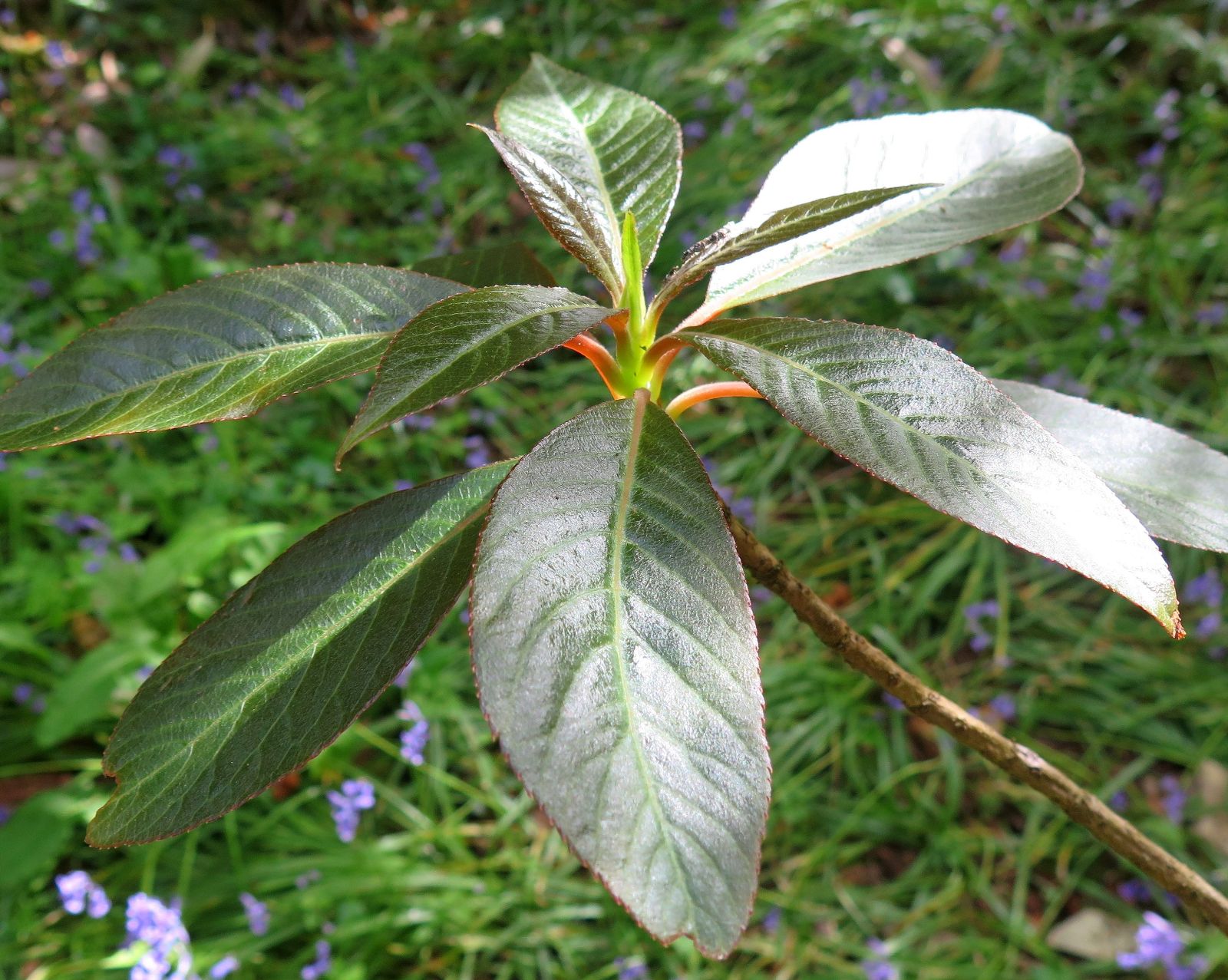Clethra poilanei
Credits
Article from New Trees by John Grimshaw & Ross Bayton
Recommended citation
'Clethra poilanei' from the website Trees and Shrubs Online (treesandshrubsonline.
Genus
Tree 6–9 m. Branchlets reddish-hairy at tips. Leaves obovate to obovate-elliptic, 9–11 4–5 cm, dark green, chartaceous, base cuneate, not uneven, apex shortly acute-acuminate, hairy on the veins; petiole 1.5–2 cm, tomentose. Inflorescence formed of several fascicled racemes to 40 cm, densely tomentose on rachis and pedicels; bracts c.3 mm, caducous; pedicels thick, 2–3 mm; calyx lobes oblong-ovate, 2.5 mm, densely stellate-pubescent; petals obovate, 3 3 mm, glabrous, white and scented. Capsule subglobose, 2.5 mm across. Sleumer 1967. Distribution LAOS; VIETNAM. Habitat Not recorded; presumably upland forest. USDA Hardiness Zone 8–9. Conservation status Not evaluated.
Clethra poilanei is in cultivation in southwestern England, but remains very rare. At Tregrehan it is doing very well, although it has yet to flower, forming straight stems with pale bark and showing promise of becoming a true tree. The hairy foliage flushes pinkish red and is attractive both at this stage and in maturity, when it retains a dull red tinge on the undersides; the petioles are also red.

